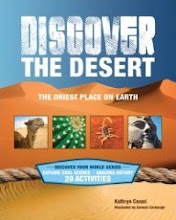We don’t live anywhere near the sea, but we still love to go to the shore. It may be a while before we get there again, but in the meantime we can enjoy a virtual voyage with marine scientists, learn about navigators of old, and watch creatures from the deep, live, on our own computer screen. The ocean offers so many interesting topics to explore that it’s hard to pick just a few. But here’s a quick selection I liked, plus some portholes, I mean portals, with links to dozens more.
Follow the day-to-day workings of scientists from
Or get a taste of the sea the way
While marine life can be fascinating, some species, sadly, have a face that only a mother (or a scientist) could love. Dr. Steve O'Shea of the Auckland University of Technology in
Whales aren’t cuddly, but at least they’re better lookin’. And Lucy, the amazing do-it-yourself, life-size, inflatable whale you build using about $60 worth of materials from the home and garden store will feel like a member of your family in no time. She’s fits in an ordinary gym bag and is light enough for one person to carry! Order the directions for $10 from WhaleNet, a site created by
Not swamped yet? Send budding oceanographers to OceanWorld from Texas A&M for easy-to-understand info on topics like waves and icebergs and recommended links. The website for NASA’s SeaWFS (Sea-viewing Wide Field-of-view Sensor), which guages the color of the ocean to learn about marine plantlife, is another good launching point for further discovery. Scroll down to How Deep Can They Go? and click on the objects on the chart (including the Titanic, submarines, and whales) for links. You’ll also find links to other sites, such as: Ocean Planet, an exhibit from the Smithsonian Institution with fact sheets, stories by “Jaws” author Peter Benchley, and The JASON Foundation for Education (formerly The JASON Project), a program that schools, homeschoolers and families can pay to join. Founded by Titanic discoverer Robert Ballard, JASON sends some lucky Student and Teacher Argonauts every year to work side by side with scientists at actual expedition sites.
Just for fun, NOAA, the National Oceanographic and Atmospheric Administration, has links to printable activities, coloring pages and other ocean-themed sites for young children. And MarineBio.org, a site where marine life scientists can find research, news, and trends and highlight the work they’re doing, has a kids’ page with links to online science games and activities. But if your kids really can’t wait to get to the seashore, let them make sandcastle sculptures at home that’ll keep forever with this recipe from KidsDomain.com. Just take 3 cups of sand, 1 1/2 cups cornstarch and 1 1/2 cup of water. Mix and cook over low heat in an old pot until thick. Spoon it out onto newspaper, shape, and dry. And happy sailing!
Family Online Picks: WHOI Dive and Discover (www.divediscover.whoi.edu/); NeMO (www.pmel.noaa.gov/vents/nemo/dive.html); Mariner’s museum (www.mariner.org/educationalad/ageofex/); Underwater Exploration (www.seagrant.wisc.edu/madisonjason11/); Yahoo! beach cams (http://dir.yahoo.com/recreation/outdoors/beaches/beach_cams/); SquidCam
(www.thesciencesite.info/squidcam.shtml); ManateeCam (www.manateecam.com/manateecam.html); Lucy (http://whale.wheelock.edu/whalenet-stuff/LucyPage.html); OceanWorld (http://oceanworld.tamu.edu); SeaWFS (http://seawifs.gsfc.nasa.gov/); NOAA (www.education.noaa.gov/socean.html); MarineBio (http://www.marinebio.com/MarineBio/MindGames/).
